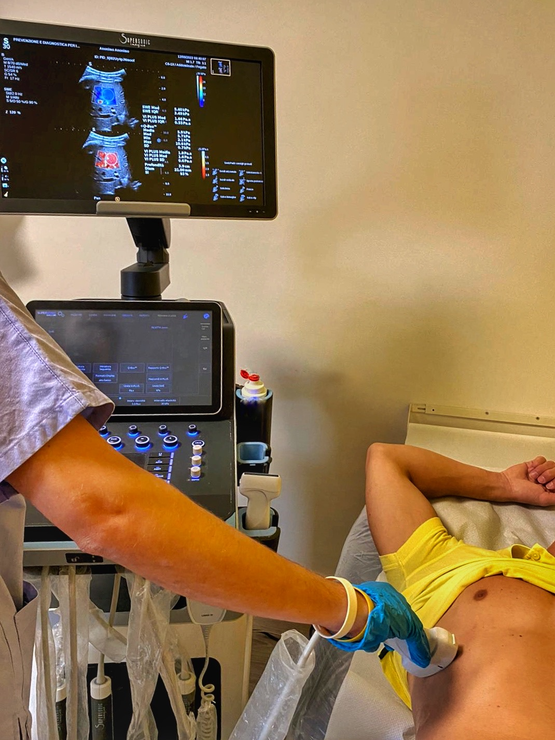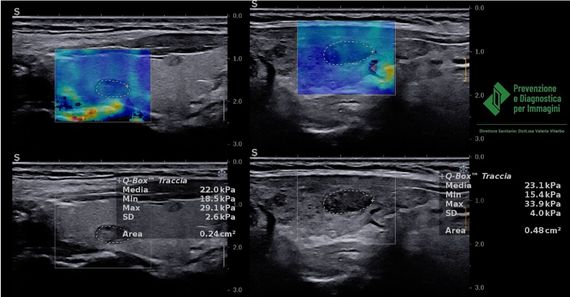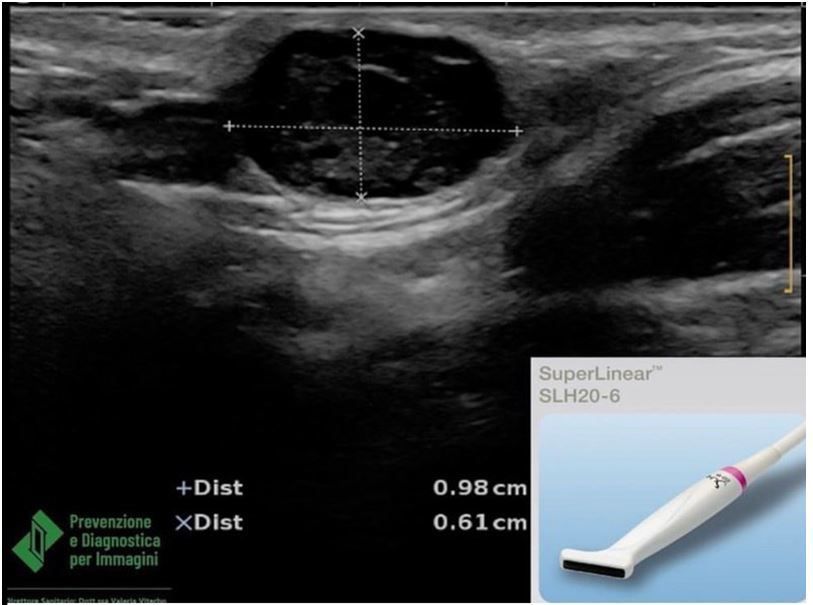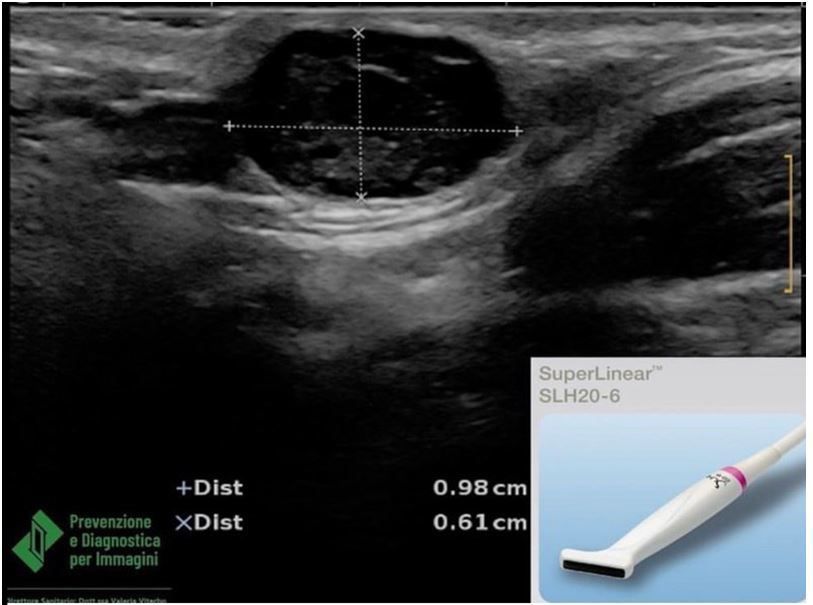Prevenzione e Diagnostica per Immagini uses state-of-the-art equipment to perform breast, abdominal, thyroid, dermatological, musculoskeletal and soft tissue ultrasound scans.
State-of-the-art equipment is used at the centre which also allows for the multi-parametric assessment of the liver with the Aixplorer® Mach system and the hepatic Shear Wave and mammary and thyroid nodules.
Shear Wave and Fibroscan
In patients with hepatopathy, Shear Wave Elastosonography makes it possible to assess the elasticity of the liver by calculating its 'stiffness', expressed in kiloPascals (kPa), to define the degree of liver fibrosis and correlate it to a numerical value that can be checked periodically, usually every year, to follow the evolution of the disease.
Recent scientific evidence shows that ShearWaveTM Elastography (SWE) compared to Fibroscan, which is its precursor, allows more accurate differentiation of the early stages of liver fibrosis and is therefore more effective than Fibroscan. Book your examination now with very short waiting times.
Evaluation of hepatic steatosis
In the case of fatty liver, it is important to assess the degree of hepatic steatosis in order to carry out a precise and non-invasive staging of the disease and to be able to have a safe assessment of the progress of the disease at subsequent check-ups.
Indeed, we know that advanced steatosis is at the origin of more serious liver diseases such as fibrosis and cirrhosis.
With previous ultrasound scanners, the evaluation of fatty liver was completely entrusted to a visual assessment performed by the sonographer and therefore an adequate quantification of steatosis was not possible.
Today, thanks to the Aixplorer® system, in use at our centre, it is possible to quantify the fat in the liver with precise numerical values that can be compared over time, such as the intrahepatic sound speed, attenuation coefficient and hepatic-renal index (B-Mode Ratio).
Call for more information













